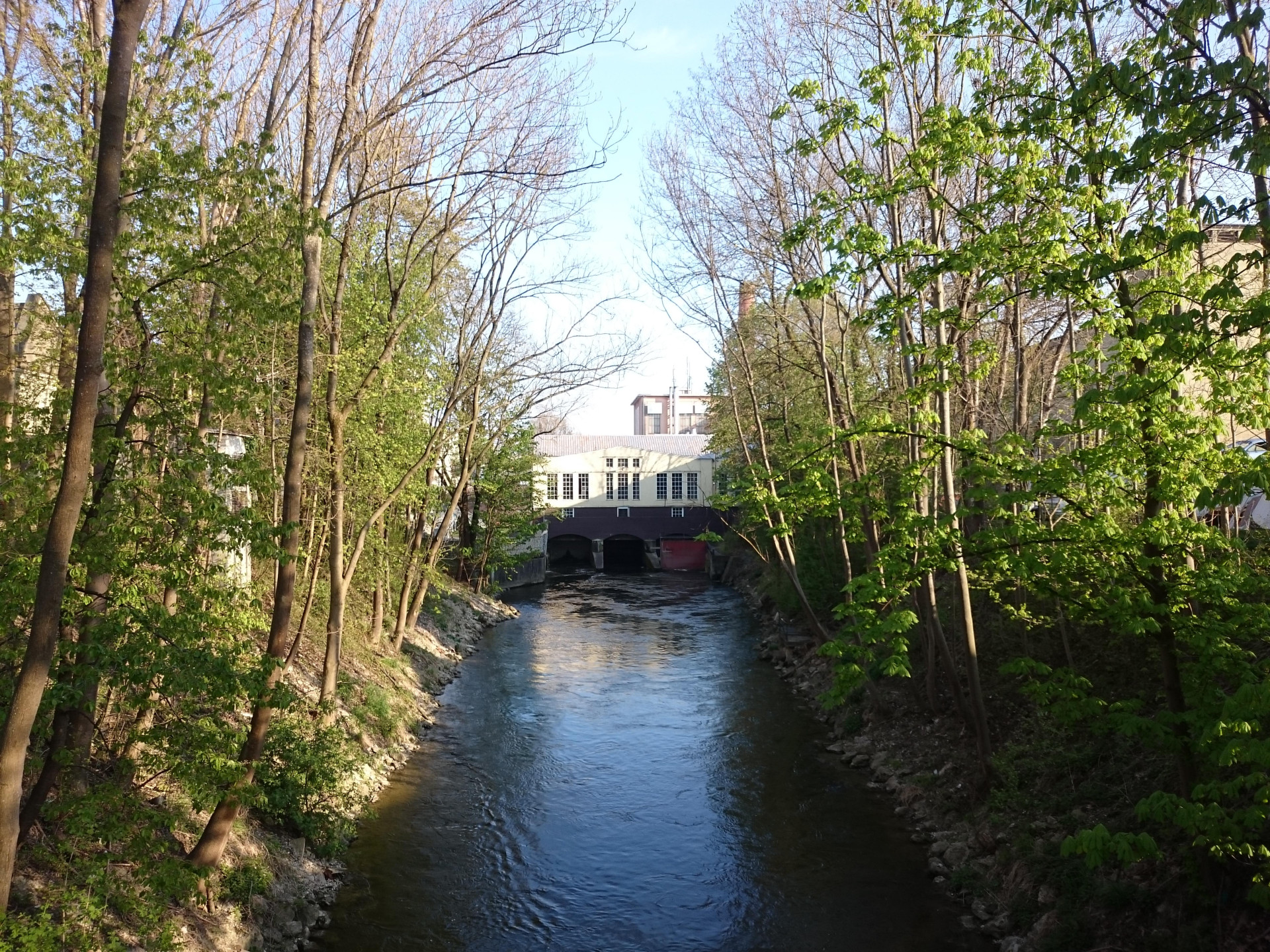
17
Power plant at the Senkelbach
The power plant built in 1904 is situated at the oldest canal of the Wertach, and initially supplied a machine factory. Later it was used for general power supply. It is still working today with a modern turbine. The set of machines used in 1923 has been preserved and is periodically in operation.
Building history and description
- Hydroelectric power plant, still in operation today, on Senkelbach on the grounds of Riedinger
- Augsburg, Rechts der Wertach; Riedingerstrasse 26G
- Construction and start of operation until 1865
- Correction of the Senkelbach course in 1890
- Replacement of wooden channel walls by concrete 1920
- Attachment to the power plant 1923
- Damage caused by aerial bomb 1940
- Reconstruction 1945
- two-storey solid construction with saddle roof over rectangular plan
- plastered facade
- rectangular steel mullioned windows on the north side
- Segment bow window on the south side
- One storey offset extension with engine room from 1923
- western grown caretaker house
Use and purpose
- Senkelbach applies (1900m length) as the oldest Wertach Canal, from 1588 occupied
- today's course around 1904 reached
- Concreting the historic wooden walls 1920
- Bombing of 1940 was applied to neighboring Messerschmittwerke, power station warden as the first Augsburg victim of the air war
- Machine sets from 1923 survived war unscathed
- two inlets and center-run shot channel
- Drop height about 6.2m, 18 cubic meters per second
- Technical Equipment:
- one Francis turbine
- one AEG-Generator from 1923
- one Kaplan turbine with vertical wave
- one Kössler-Generator from 2007
- connected, small recreational landscape
- Power plant as an object of the UNESCO world heritage stands for:
- Further development from small-scale to industrial scale
- Further development from a simple waterwheel to a highly effective turbine
- early replacement of mechanical transfers of hydroelectric power in the region by electrification
- Early replacement of local hydropower and electricity generation by decentralized run-of-river power plants
- Use of renewable energies benefits the environment,
- "Augsburg tradition" of sustainability as a global role model
Authenticity and unique features
- a machine set 2007 replaced by modern turbine including generator
- second machine set from 1923 still preserved but out of service
- oldest power plant on our list of UNESCO elements
- Providing technical development to a well-preserved, exemplary hydropower plant




